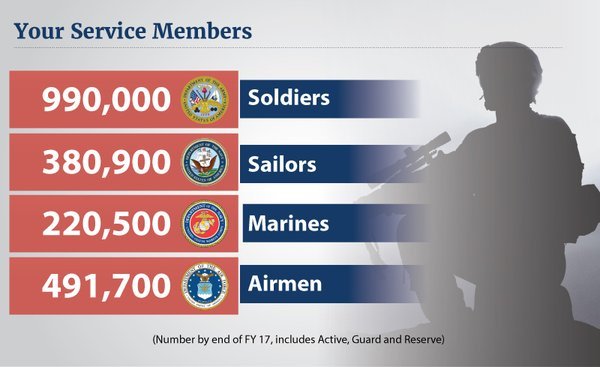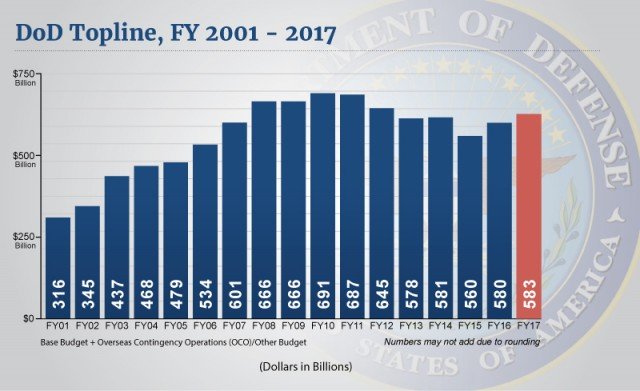By Jim Garamone
DoD News, Defense Media Activity
President Barack Obama’s fiscal year 2017 defense budget request provides the resources for implementing America’s national security strategy.
 The president’s FY 2017 defense budget request contains about $583 billion in funding and is strategy driven – meaning every capability funded in it is tied to a particular security goal for the country. Writ large, that means everything in the request is aimed at protecting the homeland, U.S. allies and critical national interests.
The president’s FY 2017 defense budget request contains about $583 billion in funding and is strategy driven – meaning every capability funded in it is tied to a particular security goal for the country. Writ large, that means everything in the request is aimed at protecting the homeland, U.S. allies and critical national interests.
Ensuring Budget Balance
You also hear a lot about balance in the budget. In the Defense Department this means balancing among compensation, training, equipment and operations, and a lot of work goes into ensuring the correct balance.
Regular people and families instinctively understand this need for balance. In our house, the balance is among shelter, food, transportation, clothes and future needs. Get those out of whack, and you have problems. When I was younger, I once blew half of my paycheck on a night out. For two weeks that month, I ate macaroni flavored by those free packets of catsup you get at a fast food joint.
Another time, my car died, and I was truly worried if I had enough to pay the rent, buy food and pay for the repairs.
Complex Budget Issues
DoD’s budget issues are far more complex. Take compensation, for example. Military pay is generally pegged to the employment cost index – a Labor Department survey of the salaries in the private sector. The ECI this year is 2.1 percent. In a perfect world, the military pay raise should be 2.1 percent also, but it is 1.6 percent.
It’s because of the need for balance. In a constrained environment, a 2.1 percent pay raise would mean less training, less money for equipment, less support when deployed. In the military profession, it could literally be the difference between life and death.
The budget also has to look to the future. You can have the best military in the world, but it doesn’t take long to lose that edge.

Investing in Future Capabilities
Capabilities don’t grow on trees. The department must invest today for the needs of tomorrow. The Joint Strike Fighter development began in 1996. It is just entering service now. New aircraft or new capabilities on old aircraft, take years to develop and purchase.
And it is not limited to aircraft. The new aircraft carrier USS Gerald R. Ford began development in 2005. It’s slated to enter the fleet in 2017.
And what capabilities will America require to fight a war in cyberspace?
National security also involves people. This year, the U.S. military probably recruited the person who will lead the force in 2056. What training will that person need? What assignments and experiences will build that leader? What schools are necessary?
It takes fiscal planning to field the best military on Earth. The defense budget is the place where this starts. Check it out.
– See more at: http://www.dodlive.mil/index.php/2016/02/defense-budget-key-to-national-security-strategy/#sthash.vXpBd0Br.dpuf


